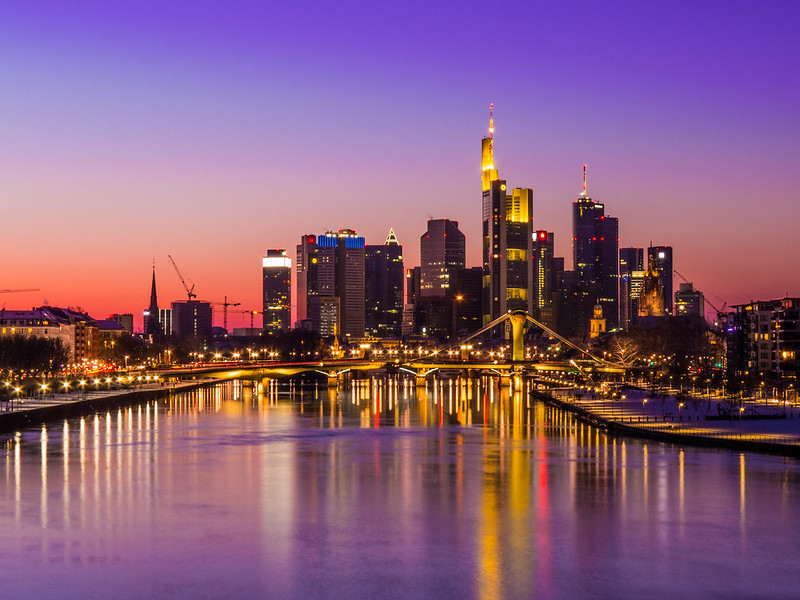Frankfurt, Germany – a Must-See Destination
Guest Post
Frankfurt, the largest city in the German state of Hesse and the fifth largest city in Germany, is the financial and transportation center of Germany. Located on the river Main, Frankfurt is not only the financial capital of Germany, but of Continental Europe, and is home to the European Central Bank and the European Stock Exchange. Frankfurt is well known for its futuristic, avant-garde skyline, which is home to wealthy bankers and students alike, and draws millions of tourists per year into its popular downtown area.
If you’re planning a trip, here are a few reasons why you should consider Frankfurt.
History of Frankfurt
Frankfurt has a rich history that goes back centuries. It was founded close to the 1st century as a Roman settlement; in fact, even its city district Bonames has a name dating back to Roman times. During the Holy Roman Empire, Frankfurt was considered one of the most important cities, and the coronations of kings and emperors were held there. Because Frankfurt was seen as such an important center for business and trade, it was often the subject of occupation by other countries who desired it, including France. Frankfurt was also very involved in World War II suffering severe bombing that destroyed the city’s once famous medieval center along with many irreplaceable and historically significant documents. After consideration and then rejection as provisional capital of Germany after the war, Frankfurt settled into a bustling and rich community known for its efficient underground transportation systems and thriving economy.
Architecture of Frankfurt
Frankfurt is well-known for its ultramodern skyline, being one of the few European cities with a significant number of skyscrapers, most of which are located in the financial district. Apart from these contemporary, awe-inspiring structures, Frankfurt is also home to much post-World War II architectural progress, partly because of the need to reconstruct after the damage suffered by the city during World War II bombings. Even in spite of the sectors of Frankfurt that were destroyed in the war, there are still many examples of gothic and baroque architecture that have survived or been reconstructed as accurately as possible. In contrast, as a “green city,” one can also enjoy the many naturally preserved forest, parks, and botanical areas along the Main River as an escape.
Frankfurt Day and Nightlife
After a day of shopping on the Zeil, the main shopping street of Frankfurt and one of the most frequented shopping streets in Europe, those looking for more can head towards the Fressgass, or “munching alley” for a wide variety of cafes, restaurants, delis, and street food. After that, entertainment can be found in the sectors of Sachsenhausen, Bockenheim, Bornheim, and Nordend, as well as the city center, the main areas of action in Frankfurt. A youthful metropolis where socializing is high on the agenda, one can always find something to do. Accommodations include bars, reggae/ dancehall/ R&B clubs, and parties ranging from up-style to university student gatherings.
On the whole, Frankfurt is a city that is perfectly attuned to providing the tourist a promising and exciting expedition with a meld of historic and modern aspects that promise to delight and inspire. Don’t miss an opportunity to absorb all that Frankfurt, Germany has to offer.
This article is brought to you courtesy of Singapore Airlines. For information on traveling to Frankfurt from the U.S., visit http://www.singaporeair.com/jsp/cms/en_UK/promotions/new-york-flights.jsp. 🙂 – Travel Feeder, your ultimate guide to Europe travel




